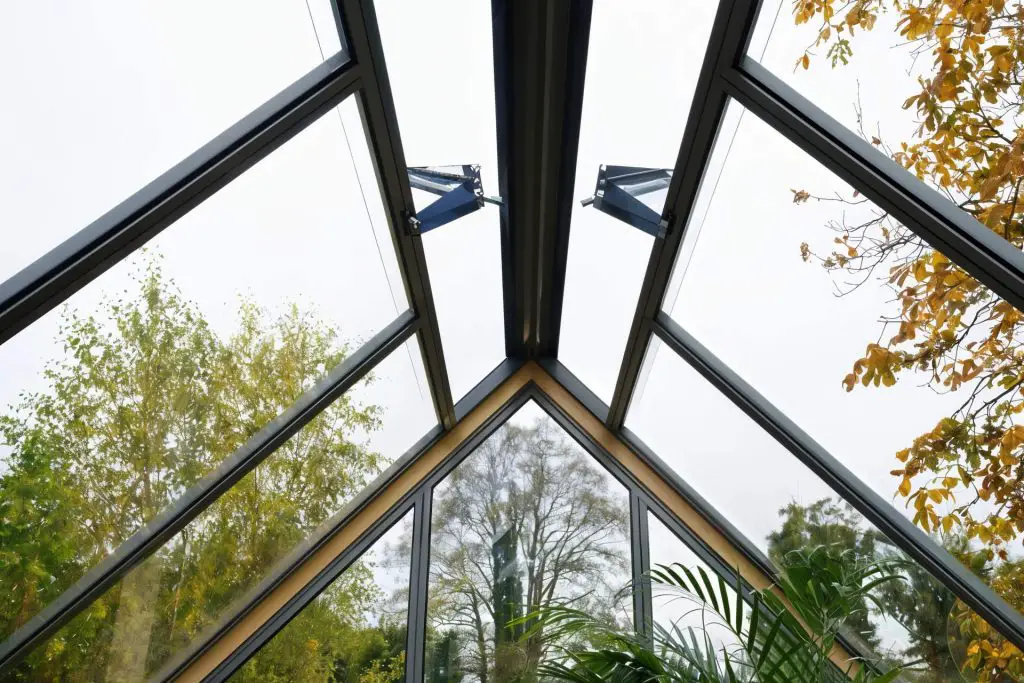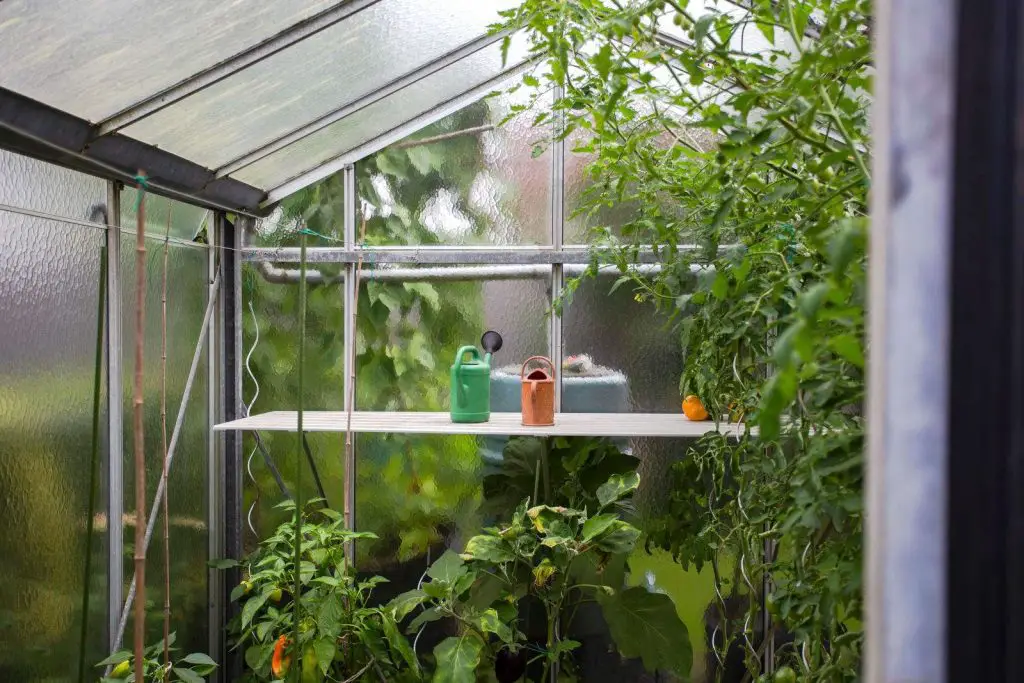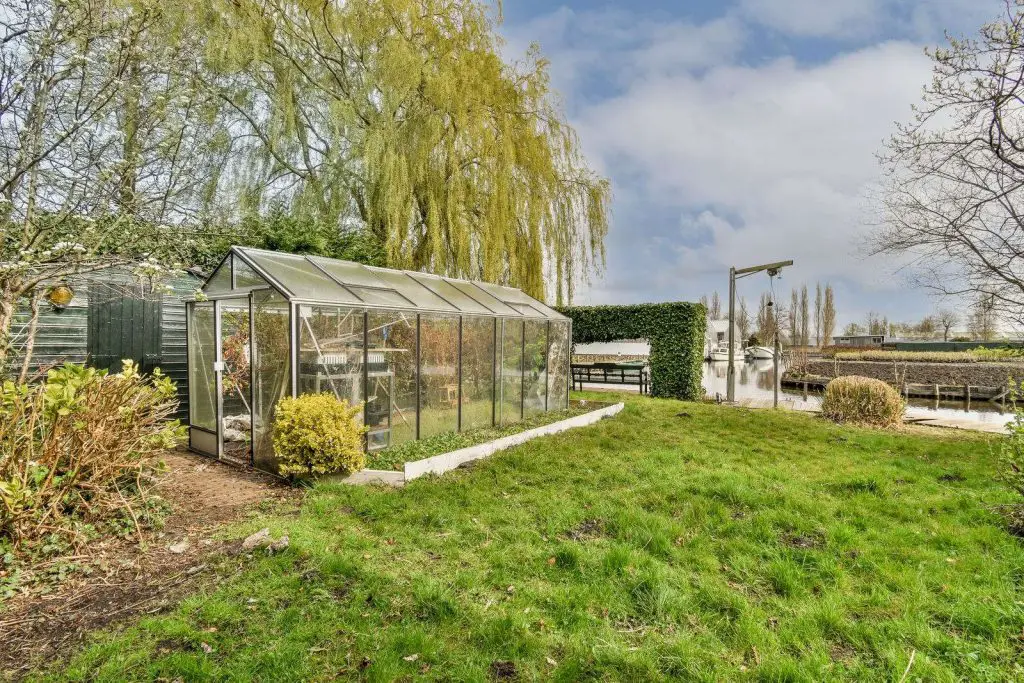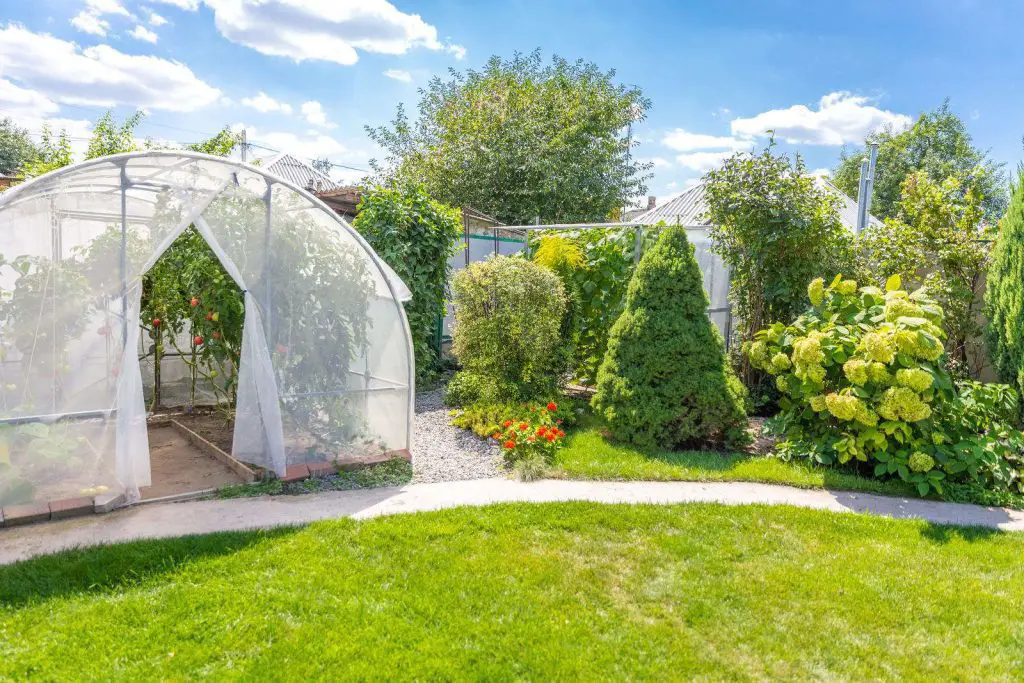Extend Your Growing Season: Benefits and Techniques of Greenhouse Gardening
If you ever have to stare longingly at your tomato plants when the first frost threatens, or maybe sigh as basil surrenders to the chill then the magic of greenhouse gardening is something you should consider.
To many gardeners the idea you could enjoy the taste of homegrown vegetables and herbs all year round is highly appealing. With the magic of greenhouse gardening it all becomes possible. It’s like giving your favorite plants a personal vacation spot, a sunny paradise where they can thrive no matter the season. Sound interesting?
The question then is where to start and what techniques are essential to ensure the success of your greenhouse gardening project. Below, we’ll explore essential factors like location, size, ventilation, temperature control, light, watering, and managing pests and diseases. Whether you’re new to gardening or a seasoned pro, this guide will provide you with practical insights to make the most of your greenhouse and enjoy year-round gardening success.
Choosing the Right Location

Greenhouse gardening starts with selecting the perfect spot for your structure. The location you choose can significantly impact the success of your gardening efforts. It’s essential to consider sunlight, shade, and accessibility when deciding where to place your greenhouse.
Importance of Location
The right location is crucial for successful greenhouse gardening. Sunlight is vital for plant growth, so aim for a spot that receives ample sunlight throughout the day. Avoid placing your greenhouse near tall trees or buildings that could cast shadows and reduce light exposure.
Sunlight and Shade
Finding the ideal balance of sunlight and shade ensures plants receive enough light without being scorched. If your area experiences intense sunlight, consider using shade cloths to protect delicate plants. Conversely, in areas with limited sunlight, positioning the greenhouse to maximize available light is essential.
Accessibility
Convenience plays a significant role in daily maintenance. Choose a location that’s easy to access, especially during harsh weather conditions. Having your greenhouse close to your home or a water source will make tasks like watering and monitoring plants more manageable.
With the right location, your greenhouse can become a thriving haven for plants, allowing you to extend your growing season and enjoy fresh produce and beautiful blooms year-round.
Determining the Ideal Size

Finding the right size for your greenhouse is a critical step in your gardening journey. The size of your greenhouse will depend on your gardening goals, available space, and budget. Let’s explore how to determine the ideal size for your needs.
Assessing Your Needs
Begin by evaluating your gardening ambitions. If you plan to grow a variety of plants or want to experiment with different gardening techniques, a larger greenhouse may be necessary. For those with limited space or focused on a few plants, a smaller structure could be more appropriate.
Space Utilization
Maximizing the available space within your greenhouse can enhance its efficiency. Shelving units, hanging planters, and tiered benches can help make the most of vertical space. Consider the layout carefully to ensure easy access to all plants, allowing for proper care and maintenance.
Scalability
Think about future expansion when deciding on the size of your greenhouse. Starting with a modular design allows for easy expansion as your gardening needs grow. Investing in a scalable greenhouse can save time and resources in the long run, accommodating your evolving gardening interests.
Choosing the right size ensures your greenhouse meets your current needs while providing room for growth. With careful planning, your greenhouse will become a versatile and productive space for all your gardening endeavors.
Ventilation: Keeping Air Circulating

Proper ventilation is essential for maintaining a healthy greenhouse environment. Good airflow prevents the buildup of excess heat and humidity, which can lead to mold, mildew, and other issues. Let’s explore effective ways to keep air circulating in your greenhouse.
Why Ventilation Matters
Adequate ventilation is crucial for plant health. It helps regulate temperature and humidity levels, preventing extreme conditions that could harm your plants. Without proper ventilation, your greenhouse can become a hotbed for diseases and pests.
Ventilation Techniques
Various methods can enhance airflow in your greenhouse. Roof vents and side vents are effective for passive ventilation, allowing hot air to escape and fresh air to enter. Incorporating fans can further improve air circulation, ensuring even distribution of temperature and humidity.
DIY Solutions
Simple DIY solutions can also improve ventilation. Using inexpensive materials like PVC pipes or plastic sheets, you can create adjustable vents to control airflow. Additionally, placing oscillating fans strategically around the greenhouse can help keep air moving and prevent stagnant pockets.
Maintaining proper ventilation is key to a thriving greenhouse. With effective ventilation techniques, your plants will enjoy a healthier environment, leading to more robust growth and extended growing seasons.
Temperature Control: Maintaining the Perfect Climate

Controlling the temperature inside your greenhouse is vital for creating an optimal growing environment. Keeping the temperature within the ideal range ensures that plants thrive, even when outside conditions are less favorable. Here’s how to manage temperature effectively.
Ideal Temperature Ranges
Different plants have varying temperature needs. Knowing the ideal temperature ranges for your chosen plants helps maintain a stable environment. Generally, most plants thrive between 70°F and 85°F during the day and slightly cooler temperatures at night.
Heating Options
Several heating options can keep your greenhouse warm during colder months. Solar heaters are an eco-friendly choice, utilizing natural sunlight to generate heat. Electric heaters provide more precise temperature control, while gas heaters offer powerful heating for larger greenhouses. Choose a heating method that suits your greenhouse size and energy preferences.
Cooling Solutions
Effective cooling solutions are essential for preventing overheating. Shade cloths can reduce solar gain, keeping the interior cooler. Ventilation, combined with evaporative coolers, can significantly lower temperatures. Installing misting systems can also help cool the air by increasing humidity and reducing heat stress on plants.
Maintaining the perfect climate inside your greenhouse is a balancing act, but with the right tools and strategies, it becomes manageable. By ensuring consistent temperature control, your plants will flourish, leading to healthier growth and extended harvests.
Lighting: Ensuring Adequate Light

Lighting is a critical component of greenhouse gardening, as it directly affects plant growth and productivity. Both natural and artificial light sources play a role in maintaining a healthy environment for your plants. Let’s delve into effective lighting strategies for your greenhouse.
Natural vs. Artificial Light
Natural sunlight is the best light source for most plants. Positioning your greenhouse to maximize sunlight exposure is essential, particularly in the winter months when days are shorter. However, natural light might not always be sufficient, especially during overcast days or in regions with limited sunlight.
Types of Grow Lights
Different types of grow lights can supplement natural light. LED lights are energy-efficient and provide a broad spectrum of light suitable for various plants. Fluorescent lights are another option, ideal for seedlings and young plants due to their lower heat output. High-Intensity Discharge (HID) lights, such as Metal Halide (MH) and High-Pressure Sodium (HPS), offer powerful lighting solutions for larger greenhouses or plants that require intense light.
Positioning Lights
Properly positioning your grow lights ensures even light distribution. Place lights at an appropriate distance from plants to avoid burning leaves while providing adequate illumination. Adjusting the height of lights as plants grow helps maintain optimal light levels. Reflective materials on the greenhouse walls can also enhance light efficiency by redirecting light back onto the plants.
Providing the right lighting conditions will help your plants photosynthesize effectively, leading to robust growth and good harvests. Combining natural and artificial light sources can create a well-balanced environment that supports your plants throughout the year.
Watering: Keeping Plants Hydrated
Watering is a fundamental aspect of greenhouse gardening, crucial for maintaining plant health and growth. Different plants have varying water needs, and managing these requirements effectively can make all the difference in your gardening success. Let’s explore efficient watering techniques for your greenhouse.
Watering Needs:
Understanding the specific watering needs of your plants is the first step. Some plants prefer consistently moist soil, while others thrive with less frequent watering. Grouping plants with similar water needs can simplify the watering process and ensure each plant gets the right amount.
Irrigation Systems:
Various irrigation systems can help automate and optimize watering. Drip irrigation delivers water directly to the plant roots, reducing wastage and ensuring efficient water use. Soaker hoses are another effective option, particularly for larger greenhouses. For those who prefer a more hands-on approach, hand watering with a hose or watering can provide greater control over water distribution.
Water Conservation:
Implementing water conservation strategies benefits both your plants and the environment. Collecting rainwater in barrels can provide a sustainable water source. Mulching the soil helps retain moisture, reducing the frequency of watering. Additionally, watering in the early morning or late evening minimizes evaporation, ensuring more water reaches the roots.
Proper watering practices ensure your plants remain hydrated and healthy, promoting vigorous growth and productivity. Whether you choose automated systems or manual methods, understanding and meeting your plants’ water needs is key to successful greenhouse gardening.
Managing Pests and Diseases
Pests and diseases can pose significant challenges in greenhouse gardening. Keeping your greenhouse environment clean and implementing preventive measures helps protect your plants from these common threats. Let’s examine strategies for managing pests and diseases effectively.
Common Greenhouse Pests
Identifying common pests is the first step in effective pest management. Aphids, whiteflies, and spider mites are frequent visitors in greenhouses. Regularly inspecting plants for signs of infestation allows for early intervention, reducing the risk of widespread damage.
Preventative Measures
Preventing pests and diseases begins with maintaining a clean greenhouse. Removing dead leaves, cleaning tools, and disinfecting surfaces can help eliminate potential breeding grounds. Introducing beneficial insects, such as ladybugs and predatory mites, provides a natural defense against harmful pests.
Natural Remedies
Natural and organic methods can effectively manage pests and diseases without harming your plants. Neem oil, insecticidal soaps, and diatomaceous earth are safe alternatives to chemical pesticides. Additionally, companion planting with pest-repellent plants like marigolds and basil can deter unwanted insects.
Maintaining a healthy greenhouse environment through vigilant monitoring and preventive practices ensures your plants thrive. With the right strategies in place, managing pests and diseases becomes a manageable task, allowing your greenhouse garden to flourish.
Bringing It All Together: Your Greenhouse Gardening Adventure

Greenhouse gardening opens up a world of possibilities, allowing you to enjoy fresh produce and beautiful blooms year-round. From selecting the perfect location and determining the ideal size to ensuring proper ventilation, temperature control, lighting, watering, and pest management, each step plays a crucial role in your gardening success.
Remember, the journey of greenhouse gardening is as rewarding as the results. Each decision and adjustment brings you closer to a thriving, self-sustained garden. Embrace the learning process and experiment with different techniques to find what works best for you.
Your greenhouse can become a sanctuary where plants flourish and your gardening skills grow. Share your experiences and tips with fellow gardeners, and continue to explore new ways to enhance your greenhouse gardening adventure. The effort you invest will be reflected in the vibrant health and productivity of your plants, making every moment in your greenhouse truly rewarding.
Additional Tips for Greenhouse Gardening Success

Enhancing your greenhouse gardening experience involves paying attention to the finer details. Small adjustments and thoughtful practices can significantly improve your results. Here are some additional tips to help you make the most of your greenhouse.
Seasonal Maintenance
Regular maintenance keeps your greenhouse in top condition. Cleaning the structure, inspecting for damage, and making necessary repairs before each season ensures a healthy environment for your plants. Seasonal checks help prevent minor issues from becoming major problems.
Budget-Friendly Hacks
Gardening on a budget can be both challenging and rewarding. Repurposing household items, such as using old shelves for plant stands or creating DIY irrigation systems from plastic bottles, saves money and resources. Exploring second-hand stores for gardening tools and materials can also uncover great deals.
Community Resources
Engaging with local gardening communities provides valuable support and knowledge. Joining gardening clubs, attending workshops, or participating in online forums connects you with fellow enthusiasts who share tips, experiences, and advice. These resources can be particularly helpful for troubleshooting and discovering new techniques.
Using Technology
Incorporating technology into your gardening routine can enhance efficiency and monitoring. Installing sensors to track temperature, humidity, and soil moisture levels provides real-time data, allowing for precise adjustments. Automated systems for watering and ventilation can also simplify maintenance tasks.
Experimentation and Patience
Every greenhouse is unique, and finding the perfect balance for your specific setup may require some trial and error. Patience and a willingness to experiment with different plants, arrangements, and techniques will lead to a better understanding of what works best in your environment.
If you look to implement all or even some of these additional tips you should be able to elevate your greenhouse gardening experience, making it more efficient and enjoyable. With careful attention to detail and a proactive approach, your greenhouse will thrive, providing a bountiful and rewarding gardening journey.
